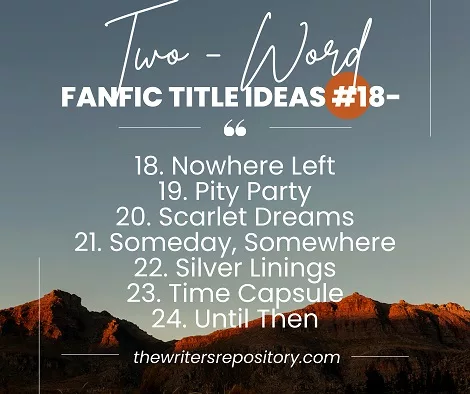Are you looking for some vivid description in creative writing examples? Sentences that paint the color of the sunset or the sense of excitement as one embarks for a new adventure? From authors like George R. R. Martin to Hester Fox, here are six ways to create vivid descriptions with some exquisite examples.
This post may contain affiliate links, which means that I may receive a commission, at no cost to you, if you make a purchase using these links.
Jump to Section
- The Definition of Vivid Description
- How to Incorporate Vivid Descriptions into Our Writings (with Examples)
- More at Our Site!
Related posts: Smell of Nature: Descriptions that Appeal to the Senses
The Definition of Vivid Description
When you describe something as vivid, you’re implying that it’s exceptionally clear and detailed. Vivid description is, thus, a description that’s so clear that it paints a picture in front of you, transporting you into the scene it’s describing.
We love incorporating vivid descriptions into our writing because it pulls the audience into the worlds of our creation, aids their immersion into our stories, and provides them with an intensive experience to escape from every day, mundane life.
How to Incorporate Vivid Descriptions into Our Writing (with Examples)
Read on for six ways to produce vivid descriptions with examples, ranging from the use of the five senses to word choice.
1. Use the Five Senses
The easiest way to infuse vivid descriptions into your writing is to describe what your character experiences through their five senses (sight, smell, hearing, touch, taste). Consider this quote by Hester Fox in A Lullaby for Witches, which employs the use of various senses:
I was beautiful in the summer of 1876. The rocky Tynemouth coast was an easy place to be beautiful, though, with a fresh salt breeze that brought roses to my cheeks and sun that warmed my long hair, shooting the chestnut brown through with rich veins of copper.
Hester Fox
Vivid description utilized the five senses. “A fresh salt breeze (smell and taste)… roses to my cheeks, chestnut brown through with rich veins of copper (sight)… sun that warmed my long hair (touch).”
Moreover, “rocky coast” also automatically conjures the image of waves crashing against rock, which is evoking the sense of hearing, touch and sight.
2. Involve Emotion
Vivid descriptions don’t necessarily have to be flowery and full of bombastic words. The right word, no matter how succinct, could be very effective when it plays with the human emotion. Take a look:
“The coarse weave was scratchy against her skin, but no velvet has ever felt so fine.”
George R. R. Martin
This sentence is part of a scene in A Game of Thrones, when G.R.R. Martin’s character Sandor Clegane, a Barantheon royal bodyguard, gave the Barantheon enemy’s daughter Sansa his cloak after she was stripped and humiliated at the Barantheon court.
One reason for its effectiveness is because it tugs at the heartstrings. Readers were touched by Clegane’s small yet merciful action that spared Sansa from further humiliation.
Playing with the readers’ emotion is always a smart move when done carefully. That, along with the highlighted contrast of the sense of touch (coarse versus velvet; scratchy versus fine) makes this sentence really impactful.
3. Inject Details
While the previous sentence by GGRM is succinct, verbose and lyrical wordings certainly has their places in creative writing. In fact, infusing rich details into your story is another method to create vivid descriptions.
Take a look at this sentence from Honored Enemy:
He remembered how his father had told him that when it snowed even humans could see the wind, and it was so. He watched as gusty eddies danced and flickered, a single flake pausing for a moment to hover before his eyes, a twirling crystal of light, the exhale of his warm breath causing it to dance away even as it melted.
Raymond E. Feist
The author colored the colorless (when it snowed even humans could see the wind), put a pause in a movement (a single flake pausing for a moment to hover before his eyes) and highlighted a transformation (his warm breath causing the snow to melt). They all have the effect of bringing this specific scene to life for the readers.
Here, the author also happens to use another method, which is anthropomorphism (“… gusty eddies danced…”)
We’ll look into it further in our next point.
4. Anthropomorphism
Create vivid descriptions by utilizing anthropomorphism (a literary device that involves giving non-human beings human characteristics, feelings, or intentions). Consider this quote from The Quality of Silence:
It’s getting so hard to breathe, my lungs are filling up with ants and there isn’t room for air any more. There’s a monster made of cold, hard as the edge of a pavement, coming towards us in the dark and it’s cutting through the windscreen and doors and windows and the only weapon against it is heat, but we don’t have any heat.
Rosamund Lupton
Here, vivid descriptions is achieved by attaching a sentient being’s attributes to non-sentient things (cold, a non-sentient thing, is likened to ants crawling up the lungs and monster coming from the dark).
The author also employed the use of details to bring the scene to life. She could have said, “There’s a monster made of cold coming towards us and the only weapon against it is heat, but we don’t have any heat.”
But instead, she wrote, “There’s a monster made of cold, hard as the edge of a pavement, coming towards us in the dark and it’s cutting through the windscreen and doors and windows and the only weapon against it is heat, but we don’t have any heat.”
The additional details transport us into the scene and we clench our teeth together with the protagonist of the story as she braces herself against the freezing weather.
5. Depth Perception
Vivid description helps the reader visualize the position of things. Words like beyond, over, above, top, bottom, high, low, instantly gives the readers a depth perception, a 3D point of view, almost, when they are picturing the scene you’re describing.
Consider this example from Tuck Everlasting:
“The first week of August hangs at the very top of summer, the top of the live-long year, like the highest seat of a Ferris wheel when it pauses in its turning. The weeks that come before are only a climb from balmy spring, and those that follow a drop to the chill of autumn, but the first week of August is motionless, and hot.”
Natalie Babbit
Natalie Babbitt in this sentence used words that indicate an upper position several times (hangs at the very top of summer, the top of the live-long year, the highest seat of a Ferris wheel).
Her writing also utilized dynamic movement (climb from a balmy spring, a drop to the chill of autumn) which indicates a flow from one position to another.
6. Word Choice
There’s no denying that word choice plays an important role in painting vivid descriptions into our writing. Describing is just as much about creating imagery and immersing the reader in a world as it is about expressing concrete information.
Consider this sentence below from Robert Lowell‘s Collected Poems:
I saw the spiders marching through the air, swimming from tree to tree that mildewed day in latter August when the hay came creaking to the barn.
– Robert Lowell
Instead of “humid day“, the author uses “mildewed day“ and it intensifies the sensation of that hot, summer day that suffocates the lungs with mustiness. By replacing swinging with swimming, the author paints an intriguing, zany picture in our minds.
More at our site!
There you have it, ways to create vivid description in creative writing as well as some examples. What’s your favorite one? Feel free to tell me in the comment!
Other similar posts: Smell of Nature: Exciting Descriptions
Or if you’re looking for writing prompts, check these out: Surreal Writing Prompts, Unique Zombie Ideas, or browse our Story Ideas & Writing Prompts category for more ideas.
If you have any question or feedback, don’t hesitate to reach out to me at the Contact Us page. Until next time!



